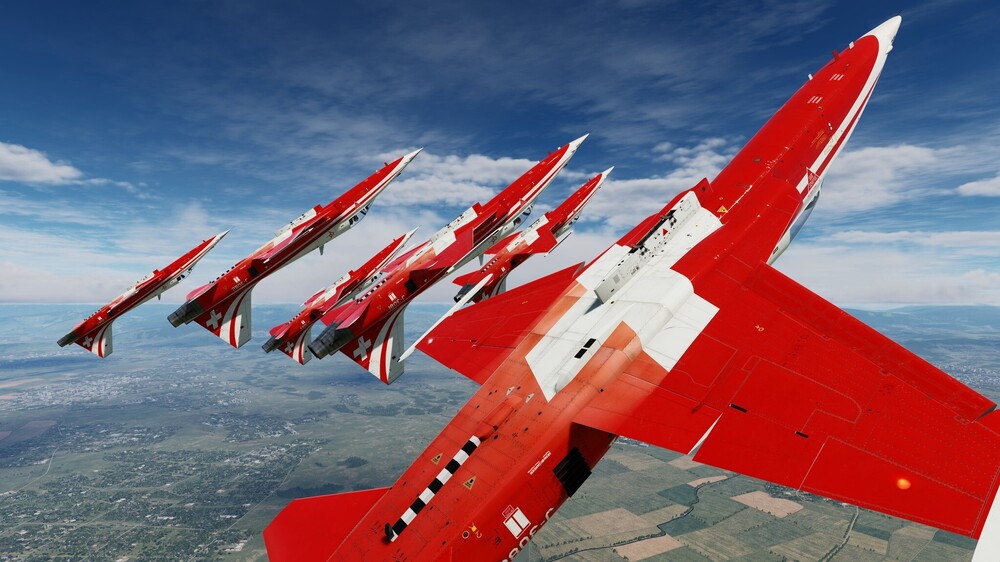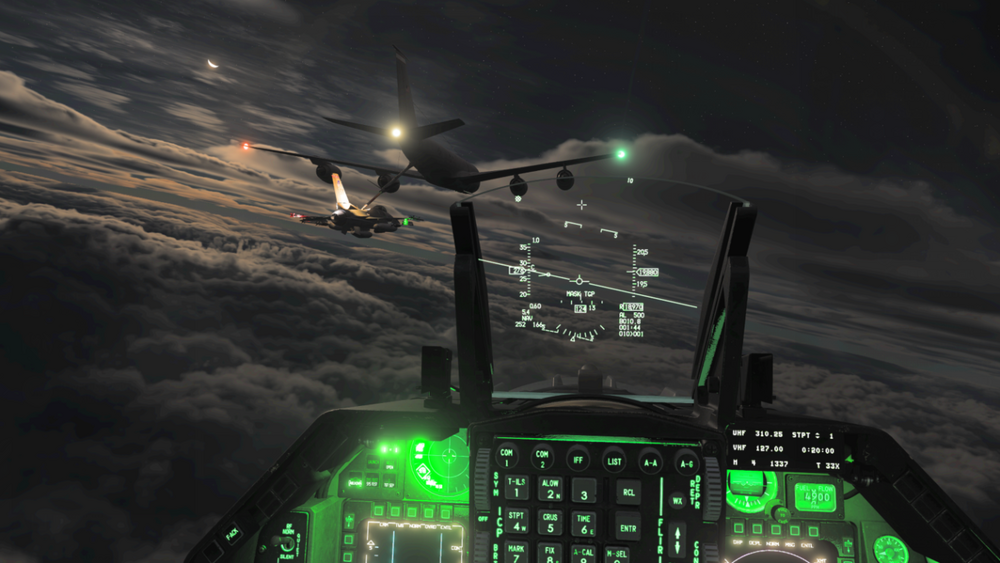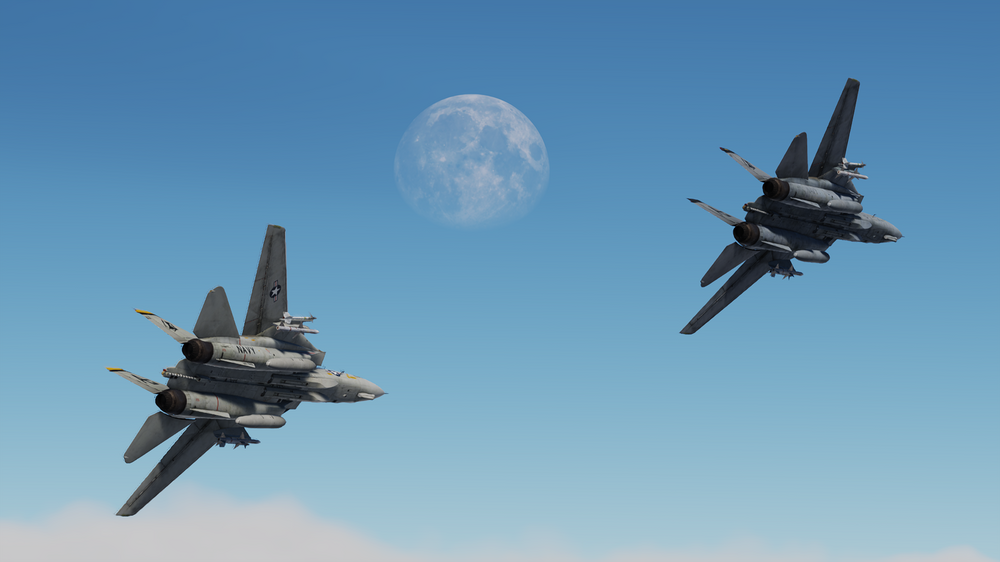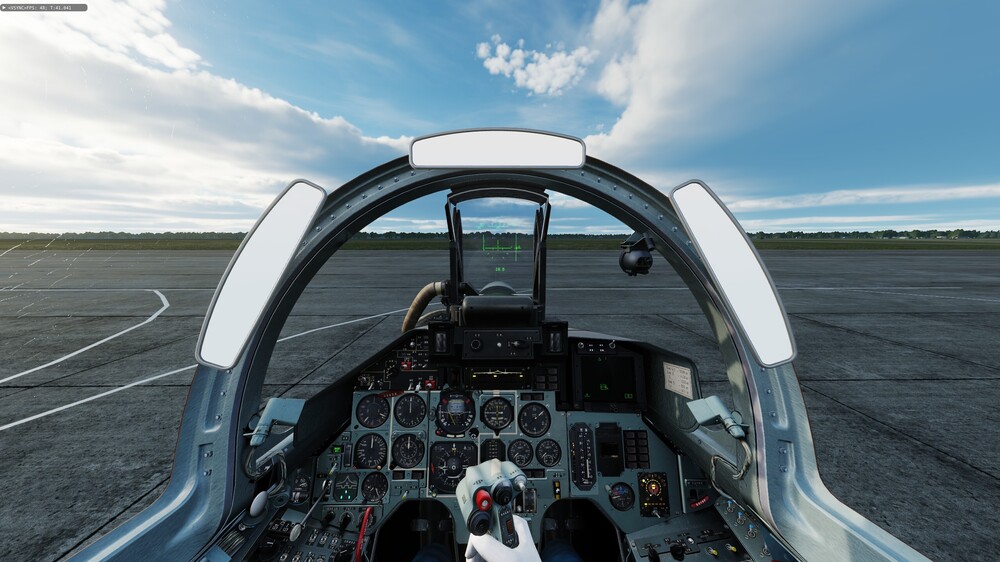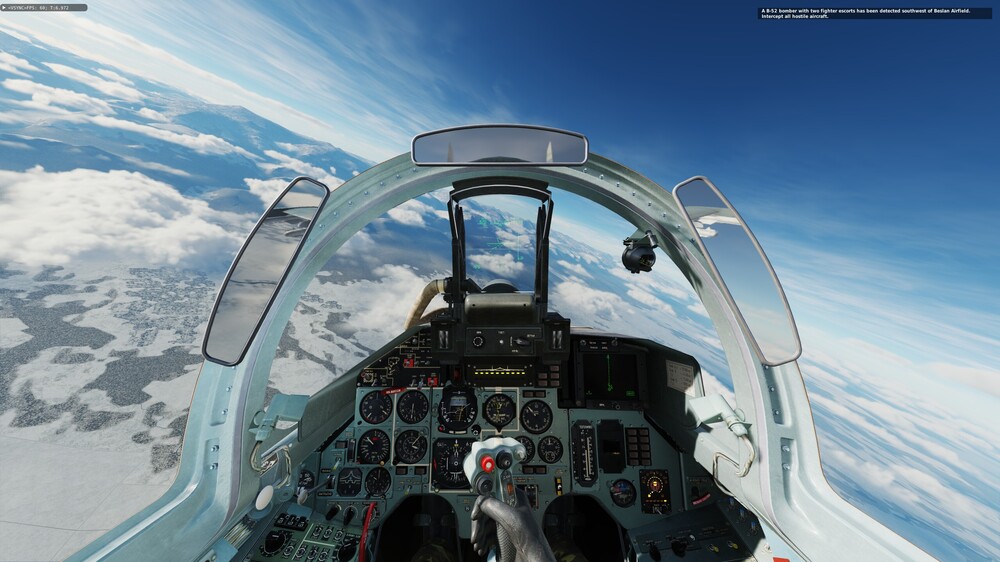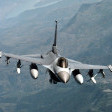Leaderboard
Popular Content
Showing content with the highest reputation on 08/24/24 in all areas
-
Good Morning Everyone. I would like to thank Gogi12 for testing the Italian Mod pack. He gave me some wonderful feedback. Thanks again. I have an idea of what needs to be updated. I will dim the flight deck lights and try to remove the water reflection. Today I will be adding the liveries. There will be 6 total liveries. Two for the earlier class of FREMM Frigates, the latter and I also created two Egyptian liveries. ironghost, Jack54 & RichCotte. Incoming. I will PM you all with the link to the mods. Please PM me your feedback. Thanks.10 points
-
Status update The UK asset pack update is progressing rather quickly and without any major hiccups. We're in final testing at the moment and if nothing major surfaces I plan on releasing the update shortly. I also want to give a big shout out to @HE5405 for creating the meshes for the Sky Sabre iLauncher, Land Rover Wolf and Land Rover WMIK. Great work! Here is a screenshot of the latest addition, a 40 mm AGL version of the WMIK.8 points
-
Yes, once the summer season is over I'll have more time to expand the pack. EDIT: oops, I thought it was the HMMWV thread. I'm not planning any update to the railway pack at this time but if you have suggestions feel free to share.6 points
-
correction of BUGs from version 23.08.24, new version 24.08.24 see page 1 for new link5 points
-
While I am certainly impressed with your commitment in expressing your thoughts, I don't understand what you would expect we could say on this topic besides what we've already been saying repeatedly in our various community channels, which is the flight model is being revised and has been for some time now. However, let me address a few misconceptions. First, the AH-64 is a very smooth-flying helicopter. Granted, it does shake a little when experiencing Transverse Flow Effect or when pulling hard out of a dive; but unless the rotor track needs refinement, it is a very smooth-flying helicopter. Second, the power of the AH-64D is not "robust" as you claim. Most helicopters will lose rotor RPMs if you pull the collective lever as high as you can. And if you overload the gross weight for the given envrionmental conditions, you will not have sufficient power-to-weight ratio for aggressive maneuvers or even hovering out of ground effect. This is a reality for all helicopters as well, not just the AH-64D. The amount of excess power that you seem to be implying the AH-64D should have is not realistic. Our roadmap has already stated that further refinements are being made. I don't think many understand the complexity of the task that our flight dynamics team is undertaking to accomplish this. It will take time and you will need to be patient. Thank you for your feedback.5 points
-
Hey Guys, can I get one more mod tester? I plan to release the mods this weekend. Thanks.5 points
-
Per -34, when auto-lasing the laser should automatically stop lasing 4 seconds after estimated impact time. In attached track you can see the laser continues to fire for up to 30 seconds after estimated impact time, only stopping when approaching the pod's masking area. The only way to stop the auto-lase is to cycle the laser switch off and on, which is not listed as a procedure item in the DCS F-16 manual for LGB employment. Other modules utilizing LITENING also have laser auto-off after x-seconds of estimated impact time. Looking at up to 2 years of YouTube tutorials, this seems to have been a long-standing issue. Perhaps it was just never added after the auto-lase feature was rolled out? Auto-lase-time.trk4 points
-
After the UK asset pack update release, I will most likely make a round of maintenance/fix updates for all packs besides the Germany and UK packs. Because things have changed in DCS, which I have to address. When that is done I shall decide which pack is next in line for additions.4 points
-
There is already a wonderfull and very complete pack for France, French Pack 5.04 points
-
4 points
-
I know the flight model of the Apache 64d in DCS has been a matter of great debate/contention. The navigation systems / Tech gadgetry playground within the MFD's / Helmet controlled 30mm cannon / exciting CPG cockpit position / and glorious hellfire's with George Ai assistant are so top notch they clearly outpace the grossly flawed flight model by a galactic lightyear. In fact, removal of TrackIR head movement and or VR from the equation and the experience then becomes subpar. The inferior flight model is exposed if you remove the attractive colorful smokescreen(s) and weapons play. Please let me explain: Severely underpowered torque bandwidth/engine power. The miniscule powerband range threshold from which the collective actually generates effective lift (weapon loaded or weapon unloaded doesn't' matter) before that annoying "motor RPM low" rears its vertical RPM elevation fun stealing Dracula fangs is maddening. No highly acclaimed in the tens of millions $$$$ per aircraft let alone one of the most feared technologically advanced Attack Choppers in the world would EVER be deployed under such a risky tiny and volatile weak operating window for lift/power. I have seen it mentioned in the forums and am in full agreement the entire Apache fleet would be grounded to prevent the deaths of its pilots even before combat was authorized. The torque meter fluctuates all over the place in DCS with a VERY VERY VERY VERY small window of power range at the VERY VERY top of its "green/yellow" max position scale. It's impossible that this is legitimate in any way and none of the DCS module helicopters I have tested exhibit this snail operating at max constant condition. Motor RPM low, Motor RPM low, Motor RPM low, where is the acceleration, where is the lift projection from ground effect in/out. Where is the evasive thrust? Where is the RPM overhead power, on controlled descent even a marginal overheard would be more believable? But none? Where is it? This is a dual engine wartime hardcore attack vehicle with performance that in real life matches its deadly purpose, it is not intended to be flown like a civilian grandpa fixed wing Cessna with overspeed manual warnings and babied fragile delicate gloves on. Or to operate like a channel 7 news helicopter covering a 7/11 bank robbery. Come on. How did your team allow this to pass when you have such amaaaaaaaaaaaaaaaaaaaaaaaaazingly potent flight models built into your older legacy copters? I love everything about this model you created except the most important component - The FLIGHT MODEL. Despite the model's extreme lack of power at the main rotor somehow a completely exaggerated OVER powered tail yaw authority (nose L/R rotation axis) exists. The Apache in DCS is sadly modeled as a "flying Tank" with severely underpowered RPM capability, yet it throws the tail rotor around with a weight profile of a Gazelle but the plastic RC version of a Gazelle purchased at Toys R Us. So, in important axis envelopes it's a bloated big birtha tank barely able to hover or accelerate under its own weight profile (like dredging through pea soup), and in another axis direction (yaw twist) is completely weightless. Come on, I simply can't understand why this flight model has not been corrected by now. Messing with curves and X/Y axis limits, of course you can dumb the controls down for more fake nose heading "precision", but craft induced oscillations on the yaw over rotation axis back and forth left and right are not pilot induced oscillations here. It's not about sensitivity at the controls, the nose goes everywhere except where you originally want it to go. Forward flight with aggressive top speed is reasonable after fighting through the pea soup acceleration stage and painful underpowered elevation climb - however slower maneuvering pinpoint street sidewalk level NOE with low forward momentum w/tactical precision hovering/popups/quick evasion while maintaining a static heading is real jumbled mess and not how any helicopter reacts to yaw stability. Along that same line with excessively over powered wiggly "yaw rotation" (absurd weight on wheels taxiing behavior can be seen by unlocking the rear tail rotor tire while on the ground. This a perfect example of this over reacting tail rotor yaw without even getting airborne! completely out of control taxi ground "over" steering occurs) - The real helicopter would not and does not do that. The problem further manifests itself with the nose teeter tottering back and forth when attempting to hold stable hovers sight locked on target with a static "fixed" gunsight facing forward (like rockets for example). At first I thought its SAS correction on the tail rotor (bringing the craft back from a yaw oversteer), but disabling SAS completely, the same defect is present. That goes against every principle of gyroscopic inertial forces from a giant spinning blade overhead. Reactive forces in physics create opposition torque rotation between the rotor and the frame, in one direction, not this back and forth back and forth wobble. Impossible. Of course, it can be finagled, and I think all of us just learn to "fly around" this over 2 year old "WIP" modeling with micro peddle tap dancing or tiring precision stick wrist rotations to dampen/catch that centerpoint at the nose. We kind of just grin and bear it, fighting the wobble, correcting with pitch nose downwards and aligning in forward flight. We accept it so we can go boom boom with the colorful weapons of freedom and those sexy MFD's/TADS (which both are badass). Granted I've mastered the controls and do some extreme precision grade flying down 5-8 feet AGL for fun, but in nooooooooooo way does an authentic Apache exhibit such nose steering yaw teetering conflicts in real life. In fact, none of the other DCS helicopters present these excessive yaw teeter tendencies and it really irks me that the magical ingredients of code and calculations that already exist in DCS are not present in the 64 to stabilize it. It's not an undiscovered attribute, ED has the magic sauce for Helos already. In fact even the superhuman DCS Community Mod developers (those guys are INCREDIBLE) have the secret (U60 and OH6A). The helicopters in DCS are all truly AMAZING and although I'm not a licensed "pilot" yet, I have been in a multitude of private civilian helicopters, including private training stick time, and am also a hardcore FPV full freestyle and FPV Quad racing competitor, for which DCS nails the flight principles of propellor-rotor dynamics with proper flight physics inertia, slide, attitude maneuvering control, drift, ascent, descent, propwash, air braking, auto rotation, ground effect taxi, and IGF/OGF static hovering to a T!!!!!! It's actually unreal how good ED and the Community Modders are at this simulation today. So what happened with the Apache 64d? Where is the FM attention ED? The last concern I have about the Apache, is the total lack of visual "SHAKE" animation feedback for effective sim immersion. Turn off Track IR / Turn off VR then look again - Where is any at all rotor driven aircraft vibration, rotor wash, or blade slap visually represented in the 64d cockpit or airframe. There is none! Have the devs actually ever sat in a Chopper fully spun up? Let me tell you, you feel that stuff and visibly see it in cockpit in real life. Its guttural. Just a simple look at any Apache Training footage online and you can see it is there in spades for those incredible pilots. It's not just a tiny vibration you can feel/touch, its physically visceral. Visually tangible aggressive shaking. There is a GIANT SPINNING ROTOR OVER YOUR HEAD for petes sake. It's not just the Apache I'm seeing you did this too, it looks like you have omitted it from the DCS CH47 Chinook as well, (If I'm wrong about that please correct me, no trial for me to test) that beautiful highly detailed masterful cockpit (knocked that out of the park btw - stunning) is as statically devoid of movement in flight as the one parked Cold on the ground deactivated. Seriously what is that?? Why are you applying smooth static sim-plane flight attributes to helicopters? Is it coding laziness? Performance hit? That gorgeous heavy lift dual rotor beast is a vibration thumping hurricane providing free butt/back massager for those pilots IRL. I see molecularly tiny bits of slight vibrations in the DCS Apache (and I mean TINY) movement in the two floating panels above the pilot dash and singular structure in the upper left facing downwards. That's it. Nearly invisible vibration to detect (super tiny). The rest of the cockpit remains lifelessly dead and STATIC (other than those distracting helmet hooks dangling that completely defy roll gravity). About as distracting as that giant water bottle in the Kiowa (seriously Polychop what were you thinking). No matter what you do to the AH64d in flight (including craziness that would get you killed) ZERO cockpit shake is introduced in your Apache. With head tracking immersion on, we kind of look past this sensory omission looking outside the cockpit - but its MISSING and makes a HUUUUUUUUUUGE difference. I truly believe that is one of THE things folks are enjoying so much with the favored/acclaimed Kiowa flight model (not the inferior graphics or inferior sounds poke, poke....)- their vibration/shake in cockpit cue is so pleasantly connected with the flight experience. Ala, "ye" old trusty UH1 Huey which has relatively universal praise for its immersive flight model amongst the DCS community is not only the variable blade slap sound of them hearty props and engine with them back gunner doors wide open (love that dam sound), but its the over the top cockpit dash and frame vibration/shake according to its flight path interaction with the outside world. Coming in and out of translational lift, VRS, settling with power, forward momentum changes, elevation velocity changes, air braking, speed increases, you hear and SEE the craft coming alive. Its freakin fantastic -Shake Shake Shake. Those who may use VR that get sick from excessive vibrations have the option in special functions to lower and tame it in the Huey, and those that want it (like me) have the option to blast it upwards and increase its level to personal taste. The level adjustment bar in the Apache 64 special functions does absolutely NOTHING for cockpit vibration other than slight weapons fire nudging. And even that weapon vibration effect is so inadequately minimal it goes unnoticed. Flying the Apache is literally like flying in a thick soup of atmospheric liquid dampening any movement/shake while wobblying around its yaw attitude axis. Underpowered, Unstable, unrealistic, non conforming to logical aerodynamics or physics, zero vibrations in cockpit, dangerous, and no visual queues or stimuli coming in and out of ground effect. Flying any other helicopter in DCS, while not always perfect - be that the decades old Huey, the overly squirrely Gazelle, the semi "new" Kiowa, MI-8, or the unbelievably SICK community mods like UH60 / OH6A they ALL simulate helicopters as helicopters, with helicopter tendencies, helicopter quirks, helicopter sounds, helicopter shake, helicopter weight, helicopter power, helicopter inertia, and the secret helicopter magic dust we obsess over as Rotorheads. It's simply rotor physics. ED, please stop releasing new stuff unfinished and half ready like the CH47 and Develop/Complete/Fix/Resolve what you have sold us already. With this module being out I believe for well over 2 years now, I'm wondering if any update/revision is even on your calendar at all which is disappointing to even have to question. Such an amazing hand crafted beautifully rendered model with pain staking attention to textured high resolution overlays, powerful system feature sets, fantastic gun/weapon animations, extremely high-quality audio sound design, excellent UI, handy AI controls, neat damage modeling, devastating payloads and MASTERFUL dev coding all around, all EXCEPT for its lonely red headed step child flight model. It's a helicopter fellas, and in my eyes its "THE" HELICOPTER, and should be THE flagship high performance standard for ED. The flight model should be PRIORITY # 1 on any aircraft no matter what the model or type may be. This comes well before the weapons, and well before the glass cockpit logic wizardry and livery skins. And most importantly WELL BEFORE ANY PUBLIC RELEASE OF A PRODUCT (UUUUUH HINT HINT CH47 impaired flight model anyone?). Knowing what I've seen with the Apache it has absolutely prevented me from buying into the Chinook for this very reason and I think you folks are losing site of logical common sense order of operation priorities. This Ah64 module is nowhere near proper flight model completion 2 years post production. Please let me and others who may be likeminded know where things stand with the Apache 64 at this point - please resolve this flight model and give a guy some camera shake/vibration - saying its "reported" and "WIP" only to be resigned to the Eastern front blackhole where things go to never be heard of or seen/spoken of ever again is not acceptable anymore. You guys have the intelligence, skills, artistic vision, raw masterful talent and industry ownership to turn things around over there. You still have a hardcore fan here, an obsessive one at that, please do the right thing and take care of those who have taken care of you. Thank you, T3 points
-
I never said the flight model doesn't need improvements. Quite the opposite actually; if you see my comments on these forums or in the DCS discord, I have been very open and honest about what and where the flight model deficiencies are within the DCS AH-64D, since day one. I'm just not going to re-hash it all here since I've already written countless detailed posts about it elsewhere, and it really wouldn't make a difference anyway. But I do tend to dispel misconceptions when they are thrown out there because they tend to spread and create false impressions of how real helicopters fly. In the end, I'll say what I know to be true and that is the flight model is being worked on in an in-depth manner and it is not something the devs are simply throwing together, rather it is about quality of work. I'm confident they'll provide a product that is equally as impressive as the other aspects of the module.3 points
-
If you haven't already, go subscribe to Carbon's channel, and join him in beta testing my Arctic Thunder F-16 Viper campaign. He's a real life Viper crew chief, and his immense knowledge about the F-16 helped me a lot in getting all the little details right in the missions. Here's a playthrough of mission 2, it should give you an idea how much effort went into this project. My aim is to make it the most realistic USAF experience that you can get in a single player environment.3 points
-
The mod update is available!!! see page 1 at the bottom of the first post.3 points
-
There is a difference in "power" I guess between the aft and forward rotor system. Something like 10% but it's never noticeable in flight really. If you're at cruise and stomp the pedal it's still going to yaw around the center of the helicopter if you don't make any other flight control inputs, I don't really see why you would ever do this and in real life it would be a good way to blow all the windows out... If you're trying to roll the helicopter AND use pedal, which is how you have to turn in the current flight model, then yes you are technically swinging the tail around as you're applying cyclic and pedal in the same direction, which will cause the helicopter to yaw about the nose rather than the center. Opposite control inputs will cause the helicopter to yaw around the tail. Pedals have a magnetic brake. They have a centering spring just like most other helicopters that is disengaged along with the Mag Brake when the Centering Device Release switch on the cyclic is pressed. NEVER taxi a tandem rotor helicopter, ie. the Chinook using the pedals. This is not currently simulated in game but in the real helicopter can very quickly cause the helicopter to destroy itself due to exceeding droop stop limitations. It can also cause the helicopter to roll over. The droop stops are in place to keep the blades from hitting the fuselage. 2 Wheel Taxi is an option as well, and pedals are used for this as the helicopter has pitch in the blades and they are not resting on the droop stops.3 points
-
MOD TECH AICRAFT DAMIEN Damienntrix le 23.08.24 helicopter demo video https://e.pcloud.link/publink/show?code=XZRF6BZAQjzj6ERQb5cp6OkQHkXSJrOqruV vehicle demo video: https://e.pcloud.link/publink/show?code=XZ51qBZWJ5eYGWccjzK0imk39RpDLhQHOJy mod_tech_aircraft_damien en version 24.08.24 (BUGFIX DE LA VERSION 23.08.24) lien : https://e.pcloud.link/publink/show?code=XZOEFPZTeroknt5WWSy0tDwE6N9thIjDApX vehicles in this mod ships in this mod helicopters in this mod2 points
-
Like these? Interested? I need to fix a few texture errors before posting this set2 points
-
The Spitfire is my favorite DCS module to land of all of them. Definitely reminds me of my days of yesteryear flying taildraggers. One of the drills we always did when training a new guy in a taildragger was to shove the stick forward just before touchdown to get a big bounce going so he could learn the proper technique to use to avoid getting in a horrible PIO. That was because, on a regular basis, you got one bouncing and it didn't really matter if it was a 320 lb experimental or 65,000 lb bomber.2 points
-
I totally get where this wish came from, however any space or download saving attained this way may be much smaller than you think. First of all, the DCS Updater only downloads updates for terrains that you own, it will not download any file at all for maps that you don't own .. and maps are the biggest items on DCS by far. Second, it downloads the cockpit updates for aircrafts that you own .. for all the rest it will only download updates needed for their AI versions. Third, it downloads updates for the DCS core, irrespective of what you own .. and this update would not be saved by the scheme you propose ... unless ED went to all the trouble of making separate cores for the three aircraft types.2 points
-
Hi NightStorm, is this MOD dead now? I understand completely how much time and effort goes into these mods only to be undone by every ED DCS update, but as an avid fan of yours and this truly awesome mod I'd just like to know. Thankyou.2 points
-
As Raptor and others have stated here in this forum, yes, the FM needs fine tuning, specially with the rotor torque/anti-torque and SCAS. HOWEVER, the power available and engine torque margins are, as far as the feedbacks from people who used to fly it IRL, very close, if not on point. The AH-64D had a lot of weight added on in avionics (some 2000 pounds in empty weight alone, iirc), without much improvements on the engines/transmission end of it. As a result, it lost some performance compared to the A model. This, and other reasons, are why they developed the AH-64E Guardian now, with much better performance. That being said, plan your mission acordingly and this issue is severely mitigated. And I do agree, FM is a very important aspect of a good module, and I do have hopes of ED delivering a great one.2 points
-
Done. It will be available in next DCS update for third parties.2 points
-
ok, I will remove the A400m and the RAFALE and I will tell you when the mod will be updated2 points
-
ok, a log file would be welcome. The Tamir.lua file is an oversight, delete it and replace the entry file with the one below entrée.lua This mod is big and we will have to be lenient on possible bugs. I will do my best depending on my availability to update this mod thank you all........2 points
-
I checked that out, apparently both the heliport and airfield must be set to blue, not just the heliport, or not just the airfield. When both are set to blue, the ground crew works.2 points
-
Worse, to a rear gunner in the black of night, almost home and feeling a bit twitchy. Probably the most well known Lancaster pilot was also for a time the pilot of a Mosquito operating at night with the PFF. Understandably, the story isn’t championed so much though it’s a part of the mans history, as tragic a tale as it is. Heartbreaking for all concerned and a surprise to me when I learnt about it only a few years ago. https://aircrewremembered.com/bernard-mccormack-raf-gunner-who-shot-down-guy-gibson.html2 points
-
2 points
-
I mean, right now that's the only thing it's really useful for. That and for getting one vector if you somehow manage to get lost. What would be the point of it then? This is something you can already do with fairly simple triggers. Have you ever played that other F-16 (and now also F-15C)-orientated sim? That one has an ATC system that is leaps and bounds ahead of DCS. It's incredibly important when you have busy airbases, with lots of aircraft. At the moment the current ATC makes no attempt to manage anything, be it in the air or on the ground, which can lead to what I'd describe as utter carnage with lots of AI flights. It drastically takes away from the experience and causes more problems than it solves. But the other, non-money rich, non-WW2 combat flight simulator has one that's probably as close to perfect as you can get in any consumer flight simulator (at least). You seem to be only thinking about this from the perspective of your aircraft in a vacuum. If it's just you, alone, operating around an empty airfield, then yes, I can see how it's less useful - you're largely just clicking through a series of triggered menus. However, when you have busy airbases with lots of AI flights, then it becomes very important - a lack of a proper ATC system (which is not simply just triggered radio callouts like the one we have for the supercarrier) can absolute destroy missions with lots of AI aircraft. For instance, with the current system, as I've described above makes absolutely no attempt to manage the airspace around an airbase - it simply sticks all of the arriving aircraft into the same orbit at the same altitude, which leads to the kind of carnage I've described here. This would absolutely break any kind of persistent mission (i.e. one that tracks things like aircraft inventory and losses) as soon as the scope is sufficiently high (which might just mean - realistically replicates the number of assets in a real operation). It also doesn't properly manage aircraft on the ground either - it won't manage the traffic on the taxiways, it makes no attempt to try and get aircraft off at the appropriate time (you can't even set it - and what I've described here would be useful for the mission editor in general (because the time calculations it gives you doesn't account for takeoff time)). I've had missions where I'm the only arriving aircraft at an airbase but there's a conga line of AI aircraft taxiing to depart. Even though the ATC system had cleared me to land, the AI aircraft didn't care and made incursion after incursion onto the runway to takeoff, forcing me to do go-around after go-around while down on fuel. Eventually I just thre my hand up and said "sod it" and managed to land, narrowly avoiding an aircraft taking off. If I was in the other sim however, with an ATC system that's superior to an almost indescribable degree, it would be telling AI aircraft on the runway to expedite and hurry up out of the way and would be telling taxiing aircraft to hold short - in both cases the AI would respond and obey their instructions - this not only makes the airbase feel more alive, but gives me a much more worthwhile and less frustrating experience - I don't have to try find ways to work around the AI's stupidity like I do in DCS. That above, makes me want to avoid using AI aircraft almost entirely around airbases and instead make use of air starts and group deactivate. I'm not sure it's possible to see this as anything other than a bad thing. It makes for an unimmersive experience that feels much more dead than it could be. Having experienced something where this isn't the case makes the problems all the more present in DCS. There's also other things as well: The different services (ground, approach, tower etc) aren't separated by frequency when they should be (where applicable). With busy airports, this leads to comms getting clogged up and here it's a good thing that the AI don't interact with ATC, even if it makes SP airfields feel dead. There's no ATIS, which would be important if we ever get weather that changes with time. ATC doesn't support parallel runways. ATC doesn't provide taxi instructions. ATC only supports straight-in approaches, it doesn't support PAR approaches, it doesn't support overhead breaks (and will tell you "go around, runway occupied" even when the airfield is empty - this doesn't exactly help the immersion). The english language ATC only has one voice actor, which doesn't help the immersion either. Many aerodromes don't have their name voiced, again, this doesn't help the immersion. ATC and the AI don't support section takeoffs (not unless they're starting from the runway), which increases the interval between departing aircraft, making takeoff operations take longer than they need to). The ATC doesn't support contigencies or emergencies - there's no way for the ATC to prioritise landing aircraft. As for the immersion, having AI aircraft that don't interact with the ATC system at all is definitely not immersive, again, it makes aerodromes feel dead. And as cfrag pointed out below this also aids situational awareness. I could probably go on and on and on about this, but the TL;DR of it all, is give that other sim's ATC system a try and then try and replicate one of its missions in DCS - you'll probably quickly see why it's important. Because, unless you're doing missions where it's just you or have a very small number of aircraft you can quickly run into problems which are at best unrealistic/unimmersive and at worst frustrating and mission-breaking.2 points
-
Yeah, playing with an AI navigator, hopefully I will be able to get it to the point where the navigator is simply vectoring you via the ME waypoints and sending intercom callouts. Toying around with AI voice transcription and generation. Human navigator, on the other hand....... Theres gonna be a lot of 1940's shenanigans going on...2 points
-
LCTs drive the swash plate so the aircraft maintains a mostly level attitude in fwd flight. When doing HAAR, we put the LCTs in manual to ensure the tip path is a far away from the basket/hose as possible. DASH Yea thats a good wat to look at it. It’s a link with 2 motors top and bottom. If I recall correctly top is no 1 system and bottom is no 2 system.2 points
-
M03 A week back when Wulf103, Mistermann, and myself had an outstanding run. The boys were in one helo and I was solo. Good times! I added some old 80's music because that is exactly what was going through my head when we were flying this.2 points
-
Screenshot Competition - Capture the action! We are happy to announce our DCS Screenshot Competition 2024, where you can showcase your best moments in the skies. We want to see your skills and creativity! Read all the details on the forum post here and earn ED miles! All winners will receive a feature to showcase their winning screenshots to the community. To reward your artistic and piloting prowess, we have some prizes lined up: 1st Place: $100 in ED Miles 2nd Place: $50 in ED Miles 3rd Place: $25 in ED Miles Eligibility: Participants must use an official copy of DCS and any relevant modules for the screenshot they submit. The competition is open to all. Please register here. How to participate: To register, simply reply to this forum post with your DCS username and include your screenshot. Screenshot Requirements: Resolution: Screenshot must be in high resolution (minimum 1920x1080). File format should be JPEG or PNG. Maximum file size is 9 (nine) Megabytes. Content: Only in-sim content. No external software or post-processing enhancements. Originality: Must be your own work and not previously published or submitted in other contests. Uploading Instructions: Reply to the DCS Screenshot Competition 2024 forum post and attach your screenshot. Include your DCS username in the reply. Deadline: Your entry must be submitted by the 23rd of August, 2024 at 23:59 Judging Criteria: Visual Appeal: Clarity, composition, and impact. Creativity: Originality and story. Relevance: How well it represents DCS. Terms and Conditions: DCS may use your screenshots in promotional materials. Selection will be done by hand in-house. You require a DCS forum account to participate. You will be contacted via the forum to claim prizes. Stay tuned for the winners announcement.2 points
-
Happy Friday everyone. Sorry, I have been absent but I needed time to concentrate on finishing the Italian Mod Pack. The Bergamini and Comandanti Class frigates are finished with the exception of the ITS Cavour. I will work on the Cavour Carrier next. Thanks for your patience. With that said I need a mod tester. The first person that responds to this post. I will send you the Bergamini and Comandanti Class Frigates for testing. Thanks. It just happened that one of the Youtubers I follow posted a video of the ITS Cavour and the ITS Alpino entering Yokosuka, Japan Naval base where I learned to Pilot ships and operate US Navy Tugboats. Lomatoq, I will send you a PM regarding the Marine drones. Thanks.2 points
-
The AIM-4 is probably one of the most misunderstood weapons systems in American Cold War history. First, a primer. The AIM-4 was built to solve a specific problem, which was NOT shooting down enemy fighters. That was considered an obsolete task in 1948, when the prevailing mindset of USAF leadership was that WWIII against the Soviets was just around the corner. After all, every two decades since 1914 we’d fought a cataclysmic global war, so it stood to reason we’d nuke ourselves into oblivion before 1970. Rather the AIM-4s job was to shoot down high flying Soviet nuclear bombers in head on interceptions. To assist with that, the AIM-4 had a hit to kill fuse. A subject of great lambasting later when it was misused in Vietnam (more on that later), the hit to kill fuse is a mission critical feature if you’re trying to take down a huge 4-engine Tu-95 or similar. A proximity fuse isn’t what you want against a resilient aircraft like that, and remember…WWIII. One damaged bomber making it through equals multiple cities getting nuked. So the missile should hit, bury itself into the Soviet bomber’s fuselage and THEN detonate, maximizing damage. To ensure the missile got there in the first place, Hughes- the builder of the AIM-4- also produced a fairly user friendly (for the time) guidance system to go with it. The Falcon worked like an AIM-54/AWG-9 (which was made by the same firm much later). The missile was part of a symbiotic guidance system, one where the Hughes guidance system (such as the MG-13) would track, lock, and manage firing functions automatically. All the pilot or pilot/weapons officer needed was to maneuver the interceptor to an ideal launch position (speed/altitude/ etc) , lock the target no closer than six miles , and the Hughes fire control computer managed the rest. The pilot gave launch consent for the AIM-4- after that the Hughes system triggered the IR seeker activation, queued the missile coolant, extended the missile from the launch bay and fired the Falcon to ensure highest probability of kill. When employed as designed using a Hughes semi-automated fire control system against high altitude targets , the Falcon was capably accurate. Bruce Gordon cites instances when F-106s would knock down BOMARC target SAMs using the Falcon, and it even acquired high off boresight IR missile capabilities (a first for the USAF before the AIM-9L) when the ADC F-101Bs and F-106s were updated later. So why did the sugar turn to manure? It was a Pentagon dispute over the USAFs next IR missile. After being compelled to buy the capable US Navy F-4B more or less as-is by Robert McNamara, the USAF System Command Generals were forced to accept using the U.S. Navy’s AIM-9B at first. Bad enough they had to adopt a NAVY aircraft, but they weren’t about to keep using the Navy’s missiles. They had some things to say about the next generation of Sidewinder missile. Things the USN didn’t care for, and negotiations for a new Sidewinder variant shared between the branches collapsed . (Incidentally, this is one reason why Cold War era USAF Sidewinders are not compatible with their Navy contemporaries.) So spurned, the USAF System Command generals told the Navy they could take their AIM-9 and shove it. They had a solution in mind- just take the USAF Falcon and lobotomize it onto the F-4D Phantom II. An IR missile is an IR missile, right? There was one problem- the F-4 wasn’t built to accommodate the Hughes guidance systems fitted to the Voodoos, Delta Darts and Delta Daggers. Adding the 50s era mechanical computer to the F-4D would be ruinously expensive , they’d lose AIM-7 capability and would take years to complete - and Vietnam was raging. So all the steps the Hughes computer managed so well in the Air Defense Command aircraft needed to be done manually in the F-4. Switchology was kludged up, the IR seeker had to be manually activated, the coolant manually triggered 90 seconds before anticipated launch (not a problem against a bomber flying a predictable course and heading , but nearly impossible in a dynamic dogfight), and making matters worse the damn thing was carried externally. The AIM-4 was designed in an era when engines didn’t have a lot of thrust and drag was the enemy , so they were built to be carried internally until just before launch. External carriage of the weapon meant the seeker was crazed to uselessness by the environment , and the Southeast Asian humidity didn’t help. The Falcon , designed to be launched with a guidance computer against non maneuvering bombers at high altitude, was deployed to Vietnam attached to a plane it wasn’t designed for, launched in a Rube Goldberg scheme nearly impossible to do manually in combat, at low altitude in an environment it was never tested in, against maneuvering fighter sized targets at low altitude in a regime completely outside its design requirements - and with a hit to kill warhead design meant to knock down Tupolev bombers, not Mikoyan light fighters. The fact five MiGs were shot down at all with a weapon completely unstable for that mission is a remarkable testament to the 8th TFW’s level of skill. Naturally, the USAF System Commands turf war permanently damaged the reputation of the AIM-4 as a tactical dogfighting combat weapon system. A regime it was never built for. The AIM-4- used as directed on the manufacturer label - was nonetheless successful as a high altitude interceptor weapon. One wouldn’t want to use it to shoot down a MiG-17, but then Ferraris are terrible cars to tow with. What should have happened in the 1960s? The USAF System Command people should have swallowed their pride, ordered the Navy’s follow on Sidewinder and had done with it. Put the Navys AIM-9D on USAF Phantoms , Thuds and Huns and we’d have a much better outcome.2 points
-
The problem is the performance degradation between 2.9.5 and 2.9.6/2.9.7. What used to work does not anymore, and that is a big problem for those of use that run missions with large unit counts. How can you simulate a war with 20 planes and 50 ground units?2 points
-
DCS currently doesn't have much to fly against for night fighting, I think the Lancaster will have to fit in as day bomber for a little while.2 points
-
DCS 2.9.7.59263 https://www.digitalcombatsimulator.com/en/news/changelog/stable/2.9.7.59263/ DCS World User Crash Reporting Tool. CTD related to animation of network client-phantom - fixed User Crash Reporting Tool. CTD triggered by aircraft unloading cargo - fixed Multiplayer text chat window not responsive until player spawns in aircraft cockpit - fixed Visual glitches if GUI scale set to more than 1 - fixed Using TAB key while Route Tool is active disables some other commands and input - fixed DCS: CH-47F by Eagle Dynamics User Crash Reporting Tool. CTD related to joining of multicrew client in CH-47F - fixed2 points
-
2 points
-
2 points
-
2 points
-
2 points
-
2 points
-
Hello, I have published three JASDF liveries on the userfiles since release: F-4EJ Kai Early Scheme 07-8428 306th Sqdn : F-4EJ Kai 302nd #77-8402 "Phantom Burai" with Corrosion Control F-4EJ Komatsu Air Meet 306th Splinter #47-83402 points
-
From FB: Welcome to another MiG-17F update. The team is working hard and continously with the current focus being on the MiG-17F systems and texturing. For this reason, today we would like to talk about one of those systems, the Radar Warning Receiver (RWR) Sirena 2 (SPO-2 / CPO-2) of the MiG-17F. The MiG-17F was equipped with an early RWR system that could only detect radar signals from the rear hemisphere. The RWR receiver is mounted on top of the tail fin assembly. Technical data: Range: 5 – 6000 meters Beamwidth: 50° vertical, 80° horizontal The RWR Sirena-2 gave the pilot an audio warning signal that the airplane was being painted by a radar (from the rear); the audio signals varied according to the distance of the radar impulses that hit the antenna (the distance of the radar behind the MiG-17F). Audio signals: 4 - 6 km: high-pitched, continuous sound 2 - 4 km: rising and falling howling tone 0 – 2 km: humming tone Control of the Sirena 2 is managed by the main circuit breaker on the right side wall, while the control panel is located on top of the main instrument panel, to the left of the ASP-4N gunsight. The control panel consists of a two-position power switch and two lights. The right light (red), indicated that the system was switched off. The left light (green), indicated that the system was on and operational. We also have some pictures for you of the latest texture work. As always, everything you see is Work In Progress. Enjoy, and thank you for your continuous support!1 point
-
1 point
-
1 point
-
1 point
-
In order not to drag this out too much, as this post is quite lengthy as it is, I'll get straight to the point. The DCS F-16C is not ready for full release. This thread is in response to a post by BIGNEWY saying that the Sniper XR is the last major item before the DCS F-16C is ready for full release. Below I've listed some of the reasons why the DCS F-16C is not ready to leave early access, even with the Sniper XR added, by describing the current state of this product. This post was written with the help and contributions of several community members, who I want to send my deepest thanks to; you know who you are. Lastly, this is not an all-inclusive list, but rather a summary of the major aspects which are currently missing or unfinished in the DCS F-16C (there are A LOT of smaller items remaining in addition to this, including quite a few bugs). It's quite lengthy though, so go get a bag of crisps, crack a beer, and lets get on with it: - Damage model: Practically nonexistent, with no real damage being simulated except fuel leaks and your wings getting blown off. I put this at the top of the list because I cannot see how you can have a digital combat simulator without combat damage being simulated. - Maintainance / Pilot Fault List: Practically nonexistent, still only shows a single message which is the "FLCS BIT FAIL" if the FLCS bit fails. This is the entire error reporting system of the F-16C and is therefore an essential system in order to keep tabs on the status of your aircraft, even when you haven't taken any combat damage. For example, if your L16 time isn't set, you should get a "LK16 TIME REQD" message to tell this to the pilot. At the moment, you will eventually notice that something is wrong with datalink, and then you have to figure out what the issue is on your own through troubleshooting, rather than just checking the PFLD and immediately knowing what's wrong. This is just one example of many where proper MFL and PFL messages would be incredibly helpful, and the reason why those systems exist in real life. - Steerpoints: Exists in a very limited state. Only supports regular steerpoints, markpoints, and a partial implementation of D/L steerpoints. Many types of steerpoints are completely missing, like pre-planned threats, geographical lines, SEAD steerpoints, a plethora of LINK 16 steerpoint types, etc. We're also still missing different CRUS TOS functionality, like having DES TOS reference HACK time instead of SYSTEM time, and also the ability to blank DES TOS times and have the CRUS TOS required velocity be calculated for a steerpoint without a DES TOS, based on the DES TOS of a later steerpoint; an incredibly useful feature for improved timekeeping. - Digital Terrain System: Completely missing including its subsystems like PGCAS, TRN, OW/C, DBTC & PR. An essential system from the earliest tapes of the F-16CM-50 where you load the terrain data of a 480x480 nautical mile area wherein the DTS has features both to avoid CFIT (controlled flight into terrain) which was the biggest cause of death in the USAF at the time, to providing various subsystems to facilitate safer low altitude operations including a kind of digital "terrain following radar" mode, to decreasing INS drift by comparing your radar altitude to the know terrain elevation in different parts of the map, and also to allow more accurate targeting without using active sensors. This is for example what makes high angle JHMCS markpoints accurate, as it can reference the known ground elevation of the location you're looking at. Without the Digital Terrain System implementation, the DCS F-16C has much higher risk of CFIT, much higher risk of flying into terrain/obstacles during low altitude operations, much lower targeting accuracy (especially at longer ranges and in uneven terrain), and higher INS drift over non-flat terrain than a real F-16C of our block and tape would. - ECM: Barely implemented. Currently only barrage jamming is kinda working, and even that is extremely ineffective most of the time. MODE 1 and MODE 2 self-protection jamming is wholly inefficient under all circumstances, as the ALQ-184 currently is seemingly incapable of breaking SAM radar locks. There's also no ability to choose which bands to jam, making it impossible to jam certain surface threats without jamming your own radar for A-A sanitizing. Neither MODE 1, 2 or 3 should inhibit your radar, but rather MODE 2 & 3 should reduce the effectiveness of your radar while actively jamming in the same band as your radar, and not impact the radar at all while jamming in other bands. The AN/ALQ-184 in DCS also has 360 degree coverage, whereas it would have roughly 120 degree cones fore and aft of the pod in real life, with diminshing effect closer to the outer limits of those cones. MODE 1 should only use the aft emitter to jam threats, while MODE 2 & 3 use both fore and aft emitters. It should also have high/low settings to angle the jamming emitters downwards for surface threats and upwards for higher altitude A-A threats, as well as cooperative jamming where multiple F-16C's in close formation boost jamming effectiveness. As an aside to this, chaff is completely useless against certain threats. You can drop 120 chaff in 1 second and you still will never be able to spoof an SA-5. This in combination with an inability to break locks during jamming, means that your only real defense once an SA-5 is locked on to you is to dive towards the ground and break line-of-sight. Other emitters have similar issues. - SEAD: This point encompasses a lot of different systems which are necessary for efficient SEAD, which after all is the primary role of the F-16CM-50 in the USAF. As mentioned, the AN/ALQ-184 is completely useless in self-protect mode (MODE 1 and MODE 2) as it cannot break locks, decreasing survivability, as using barrage mode will constantly transmit your location, and also disable all your active sensors as well as the HTS pod. Most importantly, the AN/ALQ-184 is unable to break locks, meaning it can only be used pre-emptively (not very good when employing wild weasel tactics). The AGM-88 has modes like TI/GS/DL which have not been implemented, limiting the AGM-88's effectiveness in the SEAD role. Also, many different AGM-88 HOTAS commands are completely missing. HAD priority targets are missing. The LINK 16 Special Channel net has a very rudimentary implementation. The ability to target/blank pre-planned threats is completely missing. The ability to store detected emitters as SEAD STPTs is completely absent, greatly decreasing your ability to engage SEAD threats as they will just disappear after going inactive for a while, and the only way currently to target these emitters once they go inactive is if you have a human wingman, because then you can send that emitter to him via L16, and then he can send it back to you. If you've got no human wingman, you're out of luck. The AN/ALR-56M Radar Warning Receiver is still incorrectly implemented, making it useless for any kind of high threat environment (the kinds of environments where SEAD is required) as it conveys no relative lethality of detected emitters but rather displays all threats as equally lethal, being especially useless for pop-up threats and active missile avoidance as you can never tell how much of a threat a detected emitter poses to you. In real life, the late cold war saw multiple datalink capable SAMs which don't give RWR warnings at all, increasing the need for the kind of relative lethality displaying of threats that the AN/ALR-56M does in real life, especially for SEAD operations. Currently, we don't have any datalink capable SAMs in DCS, but if it's ever added, the F-16CM-50 will be completely unable to operate in that kind of environment, unlike its real world counterpart. The AN/ALR-56M should also use data provided by the INS to update detected threat locations during maneuvering when emitters may end up in RWR blind spots, and even flip the symbology when rolling the aircraft upside down, so emitters are displayed in the correct direction under all circumstances. Having a functioning RWR is maybe the most important aspect of being combat effective in the SEAD role, and currently we don't have that. - AN/ALR-56M: Even though I mentioned the issues with the RWR just above, I'm still making this a separate point just to emphasize the importance of this system. If I could only pick a single thing that'd be fixed in the DCS F-16C, it'd be the AN/ALR-56M. Right now, the DCS F-16C is completely handicapped, not merely in SEAD, but in all combat situations, because the current RWR implementation is not merely incorrect, but it makes the RWR close to useless. The AN/ALR-56M was chosen as the new standard RWR for the USAF because of it's incredible capabilities and the added situational awareness it provided to its pilots, and this is also why it was rolled out so early on the F-16CJ/CM-50, the USAF's primary SEAD platform. However, in DCS, the AN/ALR-56M is the single least capable RWR in the whole modern US fighters lineup, and in many ways it's even inferior to the old 1980's SPO-15 mounted on the MiG-29A. If you get an AMRAAM fired at you, the SPO-15 (and the real life AN/ALR-56M) will indicate how quickly the missile is approaching and how close it is to impacting you, allowing you to plan your missile defence and perform last ditch maneuvers. With the DCS AN/ALR-56M, you have no indication of how far away a missile is except when it impacts your aircraft. This really, really, really, really needs to be fixed, especially for a SEAD platform like the F-16CM-50. - Air-to-air: This is also a collection of different things. AIM-120 is still missing many features, including target size options and not least the HPRF mode, greatly reducing the maximum effective range of the AIM-120 and making the bread and butter SKATE tactic non-viable against most threats, as you need to guide it all the way to MPRF mode, a.k.a "pitbull". The Uplook Search (ULS) radar mode is still completely missing. STT mode is extremely ineffective at long range, and even against a high aspect non-maneuvering target which is detectable in RWS/VSR, it will not be able to produce a stable lock. A-A, MRM and NAV master mode are also unable to have different CRM modes selected and retained. COAST mode is still missing, meaning that notching will immediately break your radar lock and the aircraft will not even attempt to reacquire the target. On the topic of notching, the current radar implementation is EXTREMELY suceptible to notching. You can be 5 nautical miles away from an enormous KC-135 in look-up conditions against a clear blue sky, and it will still notch you as it reaches 90 degrees aspect, even if it's only for a split second, which should be physically impossible with a modern radar like the AN/APG-68V(5). Even notching against ground clutter should be extremely ineffective unless the target is very close to the ground or has a big chaff cloud next to it. Auto range scaling in SAM/DTT modes still automatically decreases the range scale, which it shouldn't, making those modes useless for situational awareness as you should still be able to freely sanitize the airspace beyond your bugged tracks in those modes. Also the HAFUs are completely unreliable, making TWS especially useless as the art of upgrading tracks is a complete black box. Blanking LINK 16 symbology will often blank all the correlated bricks as well, meaning you cannot even see the things which you've detected with your own radar. You can lock them up though and launch missiles at them, you just cannot see them on the display. Contacts which start jamming will often get snapped to exactly 99.0 nm distance on your FCR, often forcibly rescaling your FCR and requiring you to reset the FCR range settings in the middle of combat, to be able and reaqcuire that same threat. HAFU identity is also very unreliable, with enemy threats often being displayed as green friendlies for no apparent reason. And when you're in ACM mode, the bore cross in the HUD and bore ellipse in the HMCS still do not show true radar line-of-sight like they do in real life, but are instead completely static paintings giving no information at all regarding where your radar is actually pointing. - Air-to-ground: Ground radar is still extremely janky and cumbersome. Ground maps will regularly instantly blank itself during maneuvering. When entering many different radar modes, rather than the radar moving quickly to it's starting angle and then sweeping to generate a map, it often moves really slowly to it's starting angle and just does nothing for a couple of seconds, and only then does it actually start mapping. GMT mode doesn't actually lock onto the target, but rather just the point on the ground your cursor happens to be over. Gain/Contrast/Level settings for the ground radar are not granular at all, and it is often very difficult/impossible to achieve a good balance between them. Changing these settings should also only apply for what is mapped after changing those settings, so if you raise gain in the middle of a sweep, the first half of the map will be low gain and the second half will be high gain. On some maps, like Persian Gulf, you seemingly cannot ground map terrain, only objects. JDAMs still cannot be programmed properly. JSOWs cannot be programmed properly. GBU-24 is there in spirit, but still hasn't had its guidance modes properly implemented, making it quite useless and unable to even reach the target when dropped at max range and high altitude. IFF interrogations are not possible in A-G mode, which they should be. There are also missing munitions, like the CBU-89/104's, various training munitions, possibly even the JASSM. - Lighting: Some things are completely missing, like the external IR emitters which our tape and block of DCS F-16C should have, being selectable through the COVERT modes to allow external lighting at night which isn't visible to the naked eye, and also to only illuminate the lights on top of your aircraft, to stop ground threats from spotting you. If you look at the the external lights through NVGs, you'll see that the green lights seem to be NVIS compatible, but the red lights will completely fry your retina. Cockpit flood lights have very low intensity even at the max setting, and also little to no light scattering, meaning they don't actually flood the cockpit. They're more like focused spotlights, leaving many parts of the cockpit completely in the dark, even at full intensity, including the new pilot body kneeboard which is completely unreadable at night even with every single internal light source set to maximum. On the topic of spotlights, the actual Cockpit Spotlights under the glareshield are completely inop. The Cockpit Spotlights are also the only light source in the entire aircraft which are usable purely with battery power, and are commonly used in real life to monitor engine instruments during startup at night. They are also used to illuminate the pilot body kneeboard when the pilot don't want to illuminate the entire cockpit with flood lights, in order to be more NVG friendly. In addition to these points, there are also issues with light intensities. Some lights like the left indexer or external formation lights, etc., usually go from slightly dim to quite bright between 0% and 5%, and then every setting above is just almost indistinguishable amounts of extreme brightness. With other lights, most notably the cockpit flood lights, you can barely see them at all between 0% and 50% intensity, and then they go up to kinda bright at 100%. This becomes even more troublesome because of the way light brightness works in the F-16C, because when the flood lights are set to high brightness, every other malfunction and indicator light in the cockpit will go to max brightness too. This means that we can't have a bit of flood lighting without getting completely blinded by every other light source. Some lights also don't seem to be NVIS compatible at all, especially the RWR panel which is extremely bright and will wash out your NVGs. The right indexer lights seem fully NVIS compatible and won't blind you even on max brightness, while the left indexer will wash out your entire NVGs at max brightness, and still be very bright at only a few percents intensity. - Textures: The default DCS F-16C textures (including those available in the texture template) are of incredibly low quality, with not merely bolts and screws missing, but entire panels. Also the textures themselves are just poor in quality compared to what you'll find in the DCS User Files section. ED should honestly just pay Roughmaster to make a new texture template for the DCS F-16C, and remake all the low-quality liveries which are currently available for the DCS F-16C, as Roughmasters liveries are of such incredibly high quality that it's almost incomprehensible. Cockpit textures are also missing textures for multiple things. - Tankers: When refueling at a KC-135, the boom still has no resistance and exerts no force on the aircraft. In real life, the boom will push back against the aircraft when connected, allowing the aircraft to "rest" and stabilize itself against the boom. This currently doesn't happen in DCS, making aerial refueling more difficult as you need to have more accurate thrust management than real pilots do in order to stay in position. Tankers in DCS also will never extend the boom farther than the halfway point when connecting even if the player is close to center and fully stabilized, so the player always has to move closer than the halfway point to connect, rather than like they do it in real life where the boom operator will extend the boom to meet the connecting aircraft. When it comes to tanker external lights, they will not turn on their position lights until the receiving aircraft is less than 1 nautical mile away, making night rejoins extremely difficult unless you want to fry the boom operator with an STT lock. Also, there are no external flood lights on the tankers, making them practically invisible while refueling at night, except for the fore/aft and up/down lights. Also, the background lighting on the fore/aft lights is very bright at night, making your fore/aft position incredibly hard to see. During daytime, the lights are very dim and the glass on the fore/aft and up/down lights is very reflective, with reflections often obscuring what the lights are indicating, especially when the sun is low in the sky. Lastly, tankers still do not transmit TACAN in A/A mode, but you have to use T/R mode instead as if they were a ground based station, meaning you also cannot see the tanker A/A TACAN distance on your DED/HUD. It would also be nice to have some basic boom operator functionality, like giving break-away calls and raising the boom if the player is to close/unstable (including an actual boom collision model), giving heads ups before entering turns, reading off the amount of transferred fuel at regular intervals, maybe even having the player be able to request a certain fuel amount via the radio menu. - DCS F-16C manual: This manual is still not up to date, and new features which are added to the DCS Stable branch still aren't updated in the manual, leading to a lot of unecessary threads on the forum as a lot of information about how systems work are lost to the sands of time in the Viper Mini-Updates thread, and usually have to be conveyed through word-of-mouth. For the things which are correct in the manual, the systems are in many cases bugged and not working according to the manual, leading to further confusion in the community when being referred to the manual. Honestly, everytime a feature is added or changed in the DCS F-16C, this should also be reflected in the manual, including a changelog of added/changed features in the manual itself. If systems are not functioning correctly, this should also be noted in the manual with a small notice in that section. After all, DCS is now a unified stable branch and then it'd make sense for every change to be in the documentation, since this isn't a beta build anymore. - The jealousy: Things which have been implemented in other ED modules, but not the DCS F-16C, even though they should be present for our block and tape. Things like the HSD Expanded Data, whose equivalents are present in the A-10C and F/A-18C, but which for some reason isn't planned to be implemented for the DCS F-16C even though it was present in the simulated block and tape IRL, greatly reducing situational awareness via datalink. Or the decision of ED to not implement the AN/ARC-210 radio which was already in active service for our block, tape and year of F-16 (confirmed by multiple ED active duty SMEs + non-ED active duty SME's + US DoD fiscal reports showing amount of quarterly AN/ARC-210 unit installations for USAF and ANG + the actual real world documentation for our tape of F-16CM-50 describing AN/ARC-210 functionality) because "it was more common later", leaving the DCS F-16C as the only modern US aircraft in DCS without the AN/ARC-210 (A-10C, AV-8B, F-15E, F/A-18C), and therefore it is the only modern US aircraft in DCS without the ability to tune multiple UHF frequencies and use a single radio for the entire UHF/VHF/FM range with HAVE QUICK capability, even though it could do this in real life during our tape and time. The AN/ARC-210 would be a very simple item to implement too as it requires no 3D modelling changes, but merely new DED pages, and seeing as this radio is already implemented in other ED modules like the A-10C and F/A-18C, it should be quite simple to port to the F-16C, making ED's resistance to implementing this radio even more of a question mark, seeing what an enormous improvement it'd be to the F-16's communications suite. There are also other things, like the HAVE QUICK page being available in the A-10C, allowing HQ functionality through SRS (SimpleRadio), however the HAVE QUICK page has not been implemented in the F-16C, making the F-16C unable to use HQ via SRS. The ability to choose Fighter/Mission Channels on LINK 16 is present in the F/A-18C, but not the F-16C forcing them to send D/L points to every F-16C on the server. Or the IFF page which has been implemented in the F/A-18C and allows setting Mode 1, 2, 3 and 4 codes, has not been implemented in the DCS F-16C, meaning we cannot set our squawk codes as you would IRL through the DED/ICP. We can only set Mode 3 via the analogue backup IFF panel. Also, the A-10C even has Mode 1 and Mode 4 timetable support, giving alerts at specific time intervals when the Mode 1 and Mode 4 codes change. The F-16C should have similar functionality where the aircraft will, instead of alerting, automatically disable/enable transponders, as well as change their transponder codes, based on certain time and position requirements. More importantly, none of these features require DTC as they can all be set from the cockpit. And even if DCS does not support HAVE QUICK and IFF functionality at this point in time, these things are supported through other softwares like SRS and LotAtc, and is as mentioned already present in other ED modules, so I don't see why we wouldn't get the same treatment in the F-16C? There are also some amazing features from non-ED modules like the Datalink Mission Assignment API in the M-2000C, which allows external sources (either AI GCI or a human via LotAtc) to send taskings via datalink to the aircraft and have them be viewed on the situational displays in the aircraft. The F-16CM-50 of our tape and year had that same kind of functionality via L16, where C2 assets can send a plethora of mission taskings which get received as a data messages, with the ability to view and accept/reject taskings via the HSD, and also send tasking completed/aborted messages to the C2 station. This would be a huge deal for human GCI/AWACS in DCS, especially with players speaking completely different languages, and it'd also open up a tonne of opportunities for mission creators to access this functionality via scripting. I'm not going to delve into why the DTC and its related functionalities are absolutely essential, as they're already in active development. Other systems like the IDM functionality and towed decoys are at least on the roadmap. For all the other points mentioned above, there seems to be no light at the end of the tunnel. If these kinds of major systems are completely missing at a so-called "full release", that would set a new benchmark for what level of quality we can expect of DCS modules. In addition to all the essential features which are still missing, the amount of bugs which still remain is impossible to overlook, to the point where you cannot even cold start the DCS F-16C according to real life checklists, as there are several inaccuracies which would force you to abort the mission and put the jet into maintainance in real life. In regards to BIGNEWY's recent comment that the DCS F-16C "is complete in regards to what we intend for the module. Our modules are never intended to be a 100% replication of the real aircraft.", I would like to point out that we're not even remotely close to a 100% replication, and people aren't even asking for 100% replication at this point. Making a 100% replication would mean adding things like the need to cycle the flight controls before initiating the FLCS BIT to warm up the hydraulics and get rid of any air bubbles in the lines, as the FLCS BIT will otherwise most likely fail. It would mean adding things like accurately modelled startup sequencies for individual systems like the FCR, MIDS terminal and other systems, where they run their own internal bits and take time to power up before being available for use. Or maybe some realistically modelled magnetic drift of the HMCS, sometimes requiring re-alignment in the air. These types of things are available in other F-16C simulators available on the civilian market, and I think we all would've hoped that the DCS F-16C would reach at least a similar level of depth and, as ED themselves have said, the DCS F-16C would be "the most realistic simulation possible" and offer a "detailed simulation of the Viper’s engines, fuel, electrical, hydraulic, comms, lighting and emergency systems and many more". I don't know how you can claim that the DCS F-16C delivers on any of those promises in its current state. I realize that ED probably wants the DCS F-16C out of early access since it's been there for over four and a half years now, but it would be a huge mistake to do so at this point in time. For ED's own sake, for their own reputation, and the communities faith in their current and future products, they should never allow a module which is in the dire state of the DCS F-16C to be considered "full release". Full release means finished, irregardless of what your post-release plans are. You might add a feature or fix a bug later at your whim, but in the end, the full release is supposed to contain everything we customers paid for, a complete and stable product, and anything which is added to the product free of charge after full release is merely charitable work on the developers behalf. It is not the fulfillment of some obligation to their customers, but rather a completely voluntary act which goes beyond what the customer paid for, in order to increase customer satisfaction. And to say "here it is" and give us what have currently + the Sniper XR would be an incredible betrayal of trust, and I for one would never buy a DCS early access module again, if this is what I can expect from it. I'm happy to support ED and third-parties early in the development process even by purchasing pre-orders as long as they deliver a decent product upon full release, which is what has happened previously in my experience. But if the F-16C is pushed out like this, that'd be a turning point for DCS as a platform. And this is something I say as a long-time DCS customer, who has been flying DCS on a regular basis ever since the A-10C was released over a decade ago, and has spent so much time and money on DCS that I don't even want to attempt to add it all up due to fears of what I'll be faced with. Without mentioning any specifics, I think we can all agree that the current drama in the DCS community is testing the community's faith in ED and DCS as a product. Pushing the DCS F-16C out of early access in its current state would do nothing to improve that situation, but would rather risk pouring fuel on the fire, which I don't think neither ED nor the community wants at this point. DCS isn't a perfect product, but it has the most potential of any combat flight sim on the market, and has been making strides to become the best combat simulator on the market. Please cherish this and do not make any reckless decisions in order to meet internal deadlines, while alienating your own customers. All I ask for is that when the F-16C reaches full release, the level of quality will at least be the same as other ED modules. The DCS A-10C which was released a very, very long time ago when ED was a much smaller company, was an incredible product. It had practically all the systems modelled that it would've had in real life to an incredible depth, only excluding certain systems which couldn't be modelled due to classification and such. It also had very few bugs, making it an absolute joy to fly, which it still is to this day. That level of quality is what I expect of an ED product, based on the benchmark that ED themselves set. Not only would a DCS F-16C release in anything close to its current state be well below this benchmark, but it'd also not even live up to what ED themselves have claimed their goals are for this product on the DCS F-16C product page and in promotional videos and press materials. So my final words in this very long post is simply a plea to ED: Please do not push the DCS F-16C out of early access before it lives up to the level of quality and fidelity which the community has come to expect of ED products.1 point
-
Recently Browsing 0 members
- No registered users viewing this page.



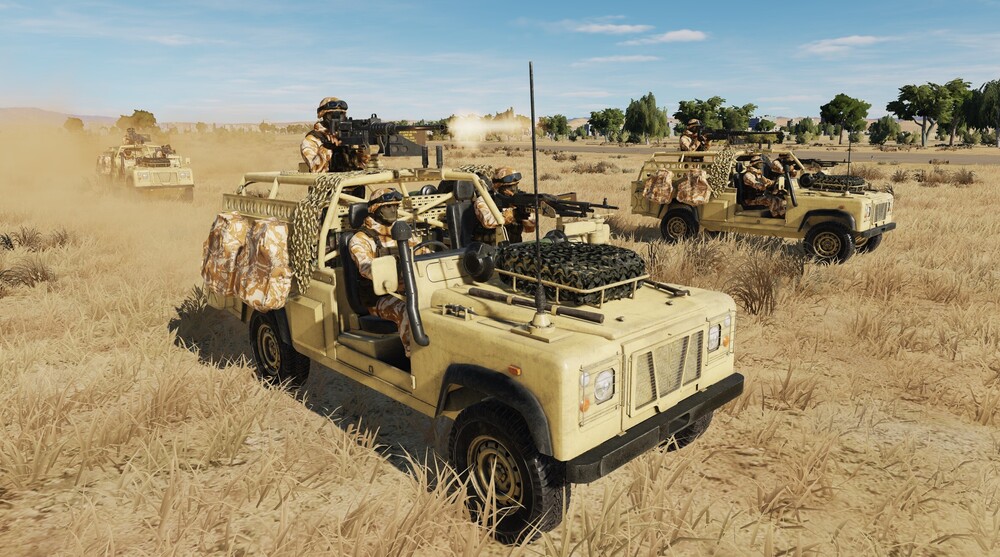
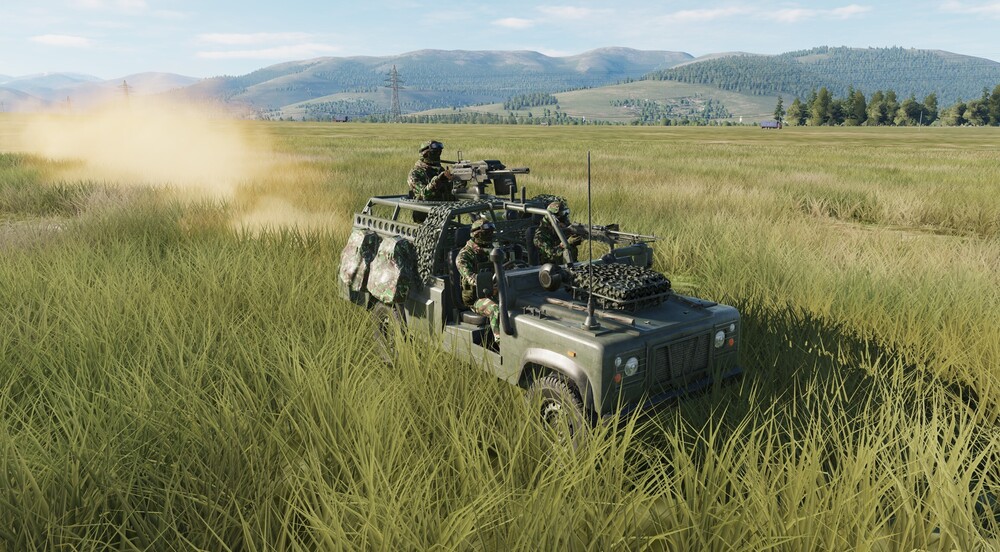


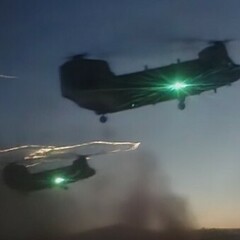



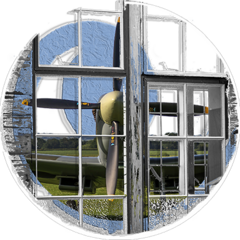

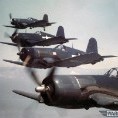

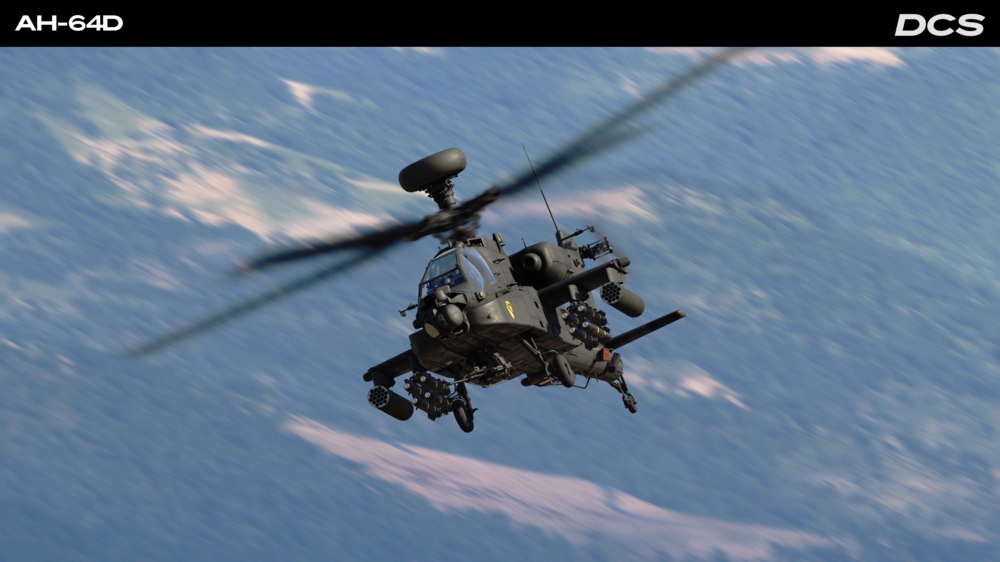














.thumb.png.aeb012cc4783662ce4b5df3caca12eb5.png)
